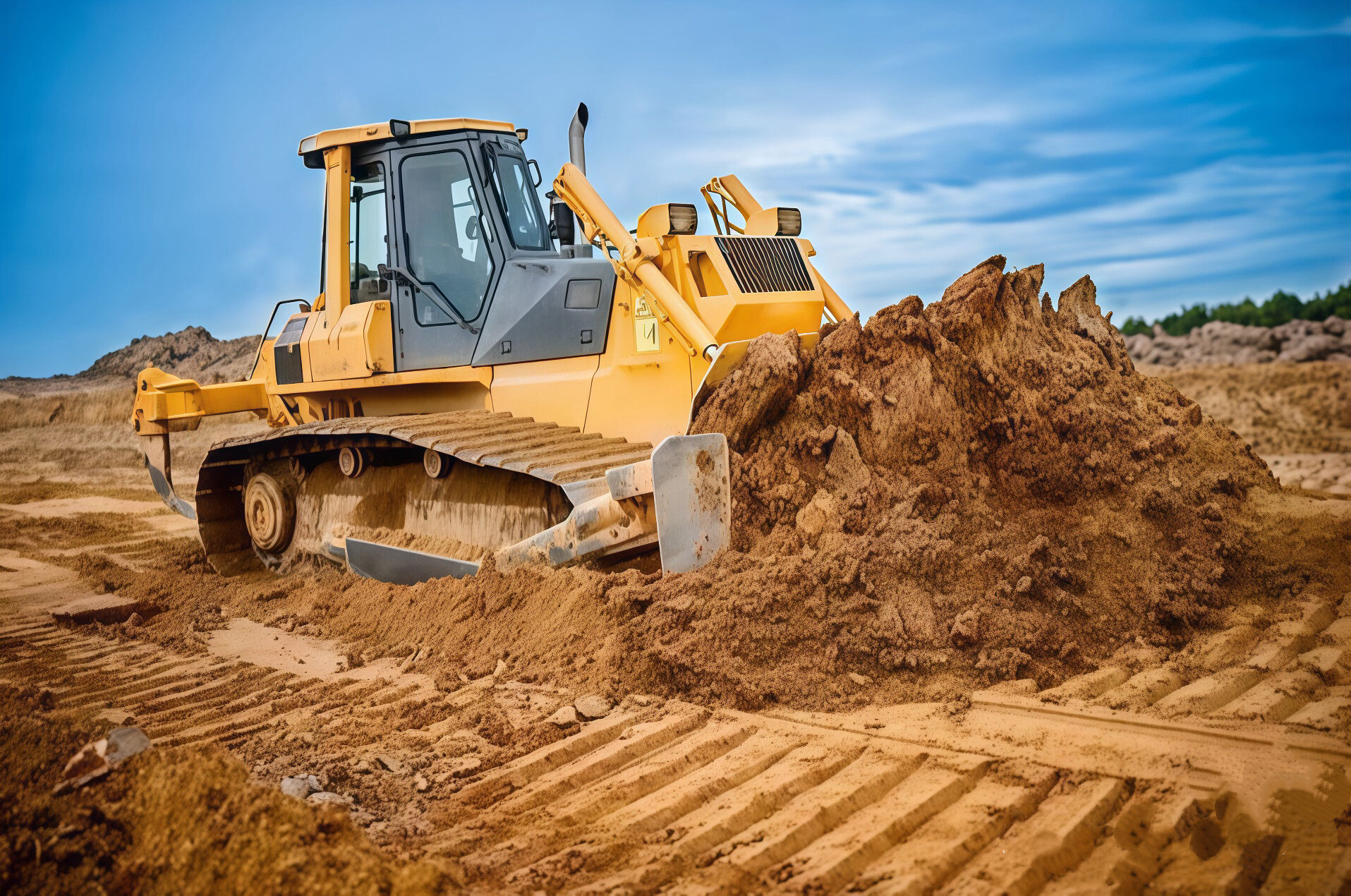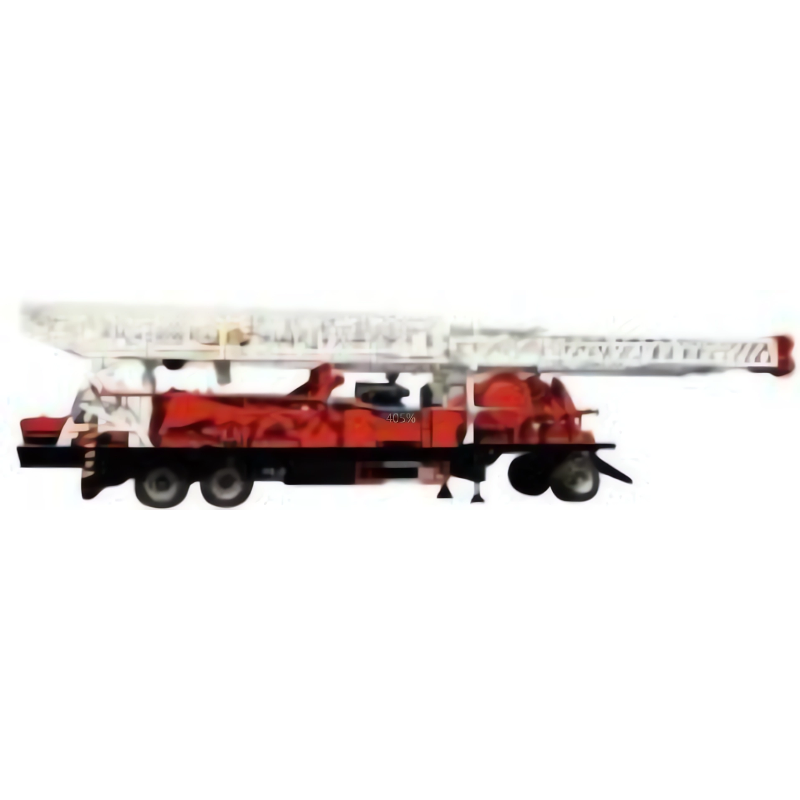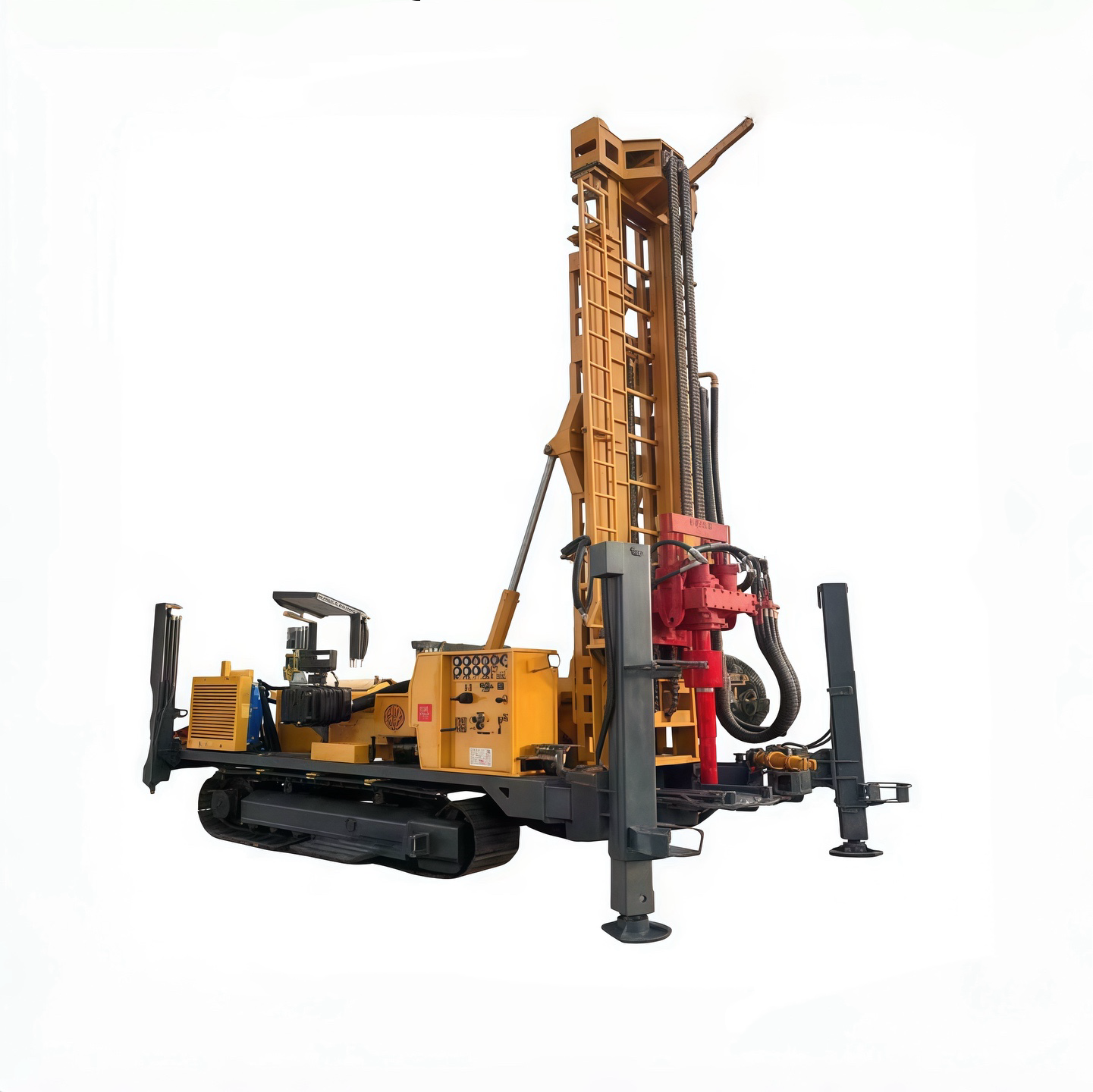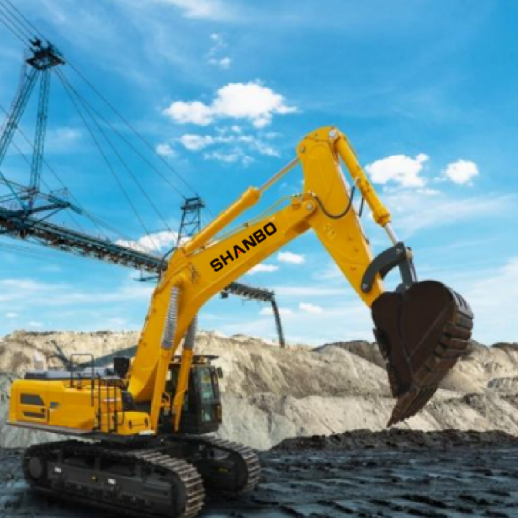The Role of the Largest Bulldozers in Mining and Earthmoving
Engineering Marvels: The Largest Bulldozer in the World
Shanbo Super Dozer: The Unmatched Titan
The Shanbo bulldozer stands out among heavy construction equipment thanks to its raw power and efficient operation. Powered by a strong engine that delivers serious horsepower along with a sizable blade, this machine handles even the most demanding mining jobs around the world. Engineers designed it with practical features that address common challenges faced in harsh environments. Operators report noticeable improvements in job site productivity after switching to Shanbo models, making them a popular choice across multiple mining sites where reliability matters most.
Mining companies worldwide rely on Shanbo's dozer to move massive amounts of dirt and rock quickly and effectively. These machines have become essential for speeding up operations at sites where huge earthmoving tasks are needed daily. What makes them stand out isn't only their brute strength, but also how operators can fine tune every function with remarkable precision. Many miners will tell anyone who asks that these dozers make all the difference when it comes to getting projects done on time without breaking the bank.
Looking at the numbers shows just how much the Shanbo super dozer can change things for mining operations. Take a look at actual deployments across different mines, and we see around a 20% boost in productivity on average. These improvements in how fast work gets done and overall performance really highlight why the Shanbo Super Dozer matters so much today in mining. Mines are starting to rely heavily on this equipment as they try to make their operations run smoother and cleaner. Many operators now consider it practically necessary if they want to keep up with modern demands for efficiency while keeping costs under control.
Caterpillar D11T CD: Industry Standard for Heavy Earthmoving
Caterpillar's D11T CD has earned its place at the top of the heavy earthmoving game by blending modern tech with the raw power bulldozers are famous for. What makes this machine stand out? Let's see: it comes packed with upgrades like beefed-up hydraulics that handle tough jobs without breaking a sweat, plus better visibility so operators can actually see what they're doing instead of guessing. The whole package means less time spent fixing things and more time getting work done. That's why construction crews around the globe keep coming back to the D11T when they need something reliable that won't leave them stuck in the middle of nowhere. Efficiency matters, sure, but so does sitting comfortably behind the wheel all day long.
Operators who have worked with the D11T CD consistently report being happy with how it performs, especially when they talk about the controls that just make sense to use and how tough it is on rough ground. Most people working in the field mention that they don't have to struggle with complicated settings anymore since everything works so smoothly. The machine keeps running without issues even after long hours of operation, which explains why customer satisfaction scores keep climbing year after year. Many companies now consider the D11T as something close to a gold standard in their equipment lineup because of these real world benefits that translate into actual productivity gains on site.
The D11T CD really outperforms older models when looking at key performance numbers. Tests and simulations indicate around a 25% boost in efficiency compared to previous versions, thanks mainly to improvements in engine technology and smarter control systems. These upgrades put the D11T CD at the forefront of heavy duty construction equipment today. Construction companies are noticing this machine stands apart from competitors because it combines raw power with smarter operation that saves time on job sites.
Comparing Crawler Dozer Capabilities in Extreme Conditions
Crawler dozers are now the go to equipment for work in really tough conditions, simply because they perform where regular bulldozers fall short. These machines handle rough terrain much better thanks to those continuous tracks that spread out the weight across the ground. The difference becomes obvious when working on slopes, muddy fields, or rocky areas where standard equipment would just get stuck. Construction crews and mining operations rely heavily on this advantage, especially during rainy seasons or in mountainous regions where flat ground is practically nonexistent.
Looking at real world applications shows just how well tracked bulldozers perform when things get tough, especially in mines far from civilization where conditions are brutal. Take Australia's mining industry for instance these machines have stood up remarkably well against all sorts of challenges, which explains why so many projects there rely on them. What sets crawler dozers apart is their capacity to keep going despite scorching heat or freezing cold, plus they handle rough ground that would stop other equipment dead in its tracks. No wonder companies stuck with tough terrain problems turn to these workhorses time after time.
Research published in major construction publications shows crawler bulldozers typically finish tasks about 15 percent faster than their wheeled counterparts when working through tough terrain or bad weather conditions. The real advantage comes down to how well these machines handle rough ground without getting stuck or losing traction. Construction companies tend to favor crawlers for jobs where things just cant afford to stop, no matter what kind of mess nature throws at them. These beasts keep going strong even when other equipment would struggle, making them a reliable choice for keeping projects on schedule despite challenging site conditions.
Bulldozer Technology Revolutionizing Mining Operations
GPS-Guided Blade Control Systems
GPS tech has completely changed how bulldozer operators manage their blades, making everything much more accurate and efficient than before. When these machines come with GPS guided blade controls, they take over jobs that used to require manual adjustment by the operator. The result? Much better precision when grading land and making those fine adjustments needed for construction projects. Time savings are pretty impressive too. Some folks in the industry say operators can save around half their usual working time with this automation, which means getting more done throughout the day.
The ongoing development of this tech means we might soon witness operations that are far more precise than what we have today, cutting down on mistakes made by humans while completely changing our view of old fashioned digging work. These kinds of upgrades will likely shake up the bulldozer business quite a bit when it comes to getting things done faster and better. Companies working in construction sites or mines could find themselves relying heavily on these machines instead of traditional methods, making them stand out among competitors in those tough markets where time equals money.
Dual-Engine Power Configurations for Mega-Projects
When it comes to big mining operations, dual engine bulldozers really shine as they combine better fuel efficiency with solid performance on the job site. These machines pack extra power and stay reliable even when pushing through tough conditions that would wear down single engine models. Take those huge open pit mines for example, where crews need to move tons of dirt day after day. With two engines working together, these bulldozers actually finish jobs faster than their single engine counterparts. Some operators report cutting down operation times by around 30% on long running projects, which makes a world of difference in terms of productivity and cost savings over months or years of continuous work.
In actual practice across major industrial sites, we've seen pretty impressive improvements in both efficiency and output from these upgraded setups. Take for instance the case studies where companies reported cutting fuel costs by double digits while getting more work done per hour. These machines aren't just nice to have anymore but are becoming must-haves on job sites everywhere. Looking ahead, new tech developments like smarter engine management systems will only make these dual engine bulldozers better suited for tough conditions in mines and construction zones. Their continued presence in these sectors seems pretty much guaranteed given how much value they bring to complex operations.

Market Dynamics: Global Demand for Heavy Earthmoving Equipment
Asia-Pacific Dominance in Bulldozer Sales
Bulldozer sales have really taken off across the Asia Pacific region lately, positioning it at the forefront of the heavy machinery game. Take China for instance where construction equipment markets are booming thanks largely to massive infrastructure pushes such as the One Belt One Road project. These kinds of big ticket developments mean there's huge demand for all sorts of bulldozers these days from those smaller compact models right up to the hefty crawler versions needed for serious earth moving tasks. With governments throughout the region pouring money into roads, bridges and industrial zones, contractors need their fleets equipped with reliable machines that can handle whatever comes next on site.
The growing economy here makes sense for all these investment moves, especially since Asian countries keep building out their cities at such a rapid pace. Industry insiders think this pattern won't slow down anytime soon either. The Asia Pacific area has been sitting pretty at the top of the global bulldozer sales chart for years now. With populations increasing across the board, there's just going to be more construction work happening everywhere. That means bigger demand for those big machines, which keeps reinforcing why this part of the world remains so important in the heavy equipment market.
Price Analysis: Crawler vs Compact Dozers
Getting a handle on how bulldozer prices work matters a lot for anyone looking to buy one. Crawler dozers usually cost more than their smaller counterparts because they can handle bigger jobs and last longer in tough conditions. When we look at what affects bulldozer pricing, several key elements stand out. Engine strength, overall weight, and extra features all factor heavily into what someone will pay. Take those massive machines inspired by the world's largest bulldozer models. These beasts pack serious power under the hood and have built-in reinforcements throughout the frame. Sure, this makes them expensive, but nobody else gets the job done when facing extreme terrain or heavy earthmoving tasks in major construction sites or mines.
Market demand has been driving price changes for quite some time now. Take tracked bulldozers for example they've seen prices go up significantly lately because mining operations and big construction sites need them so badly right now. According to recent data from equipment dealers, new tech is constantly being added to crawler dozers and their smaller compact cousins too. This means prices tend to follow what's happening with the latest features on offer. We're also seeing a slow but steady move toward greener machines in the industry. Manufacturers are starting to build sustainability into their production lines just to keep up with what customers want these days. This green push definitely affects how much people end up paying for their heavy equipment over time.
Environmental Impact and Regulatory Challenges
Deforestation Risks Associated with Unregulated Dozer Use
When people let bulldozers run wild without proper oversight, it plays a major role in cutting down forests all over the planet. These big machines were built for one thing - moving dirt fast. They work great for construction projects, but when they get loose in places where nature is fragile, problems start happening. We've seen time and again how these heavy equipment operators can wipe out acres of trees and plants pretty much overnight because of what they're capable of doing. The results? Animals lose their homes, and the ground starts washing away much faster than normal after all that disturbance.
Without adequate regulation, the environmental degradation linked to bulldozers poses a serious threat that could have long-term impacts on biodiversity. To mitigate these effects, potential regulatory frameworks could include stricter licensing requirements, mandatory environmental impact assessments before land clearing, and incentives for using more sustainable practices.
Electric Bulldozer Innovations
Advancements in electric bulldozer technology offer a promising path towards reducing the carbon footprint associated with heavy machinery operations. These innovations are spearheaded by leading companies in the industry, which are developing electric bulldozers that offer similar performance metrics to their diesel counterparts but with significantly lower emissions.
User perception of electric bulldozers is generally positive, as they appreciate the quieter operation and reduced environmental impact. Early adoption statistics indicate increased interest and investment in sustainable machinery, signaling a shift toward greener technologies in heavy earthmoving equipment.
GPS Tracking Mandates for Basin Operations
GPS tracking plays a huge role when it comes to following environmental regulations at mining sites. When companies install GPS systems, they get real time visibility into their day to day activities, making sure everything stays within legal boundaries set by authorities. Look at actual field reports from various mines around the world, and we see better accountability because these trackers catch problems early on. For instance, if equipment strays into protected areas or waste disposal goes off track, alerts pop up almost immediately so corrections happen before fines pile up. This kind of oversight isn't just good for avoiding trouble with regulators either it actually helps protect ecosystems while still allowing necessary resource extraction to continue responsibly.
The regulatory framework often mandates GPS tracking for monitoring land use in mining operations, highlighting its role in minimizing unauthorized exploitation and enforcing responsible practices. This is vital for maintaining the ecological balance while meeting industrial demands.
Operational Efficiency in Extreme Conditions
Blade Capacity Optimization for Overburden Removal
Maximizing blade efficiency in bulldozers is crucial for effective overburden removal in various conditions. Techniques like adjusting the blade angle and ensuring the correct weight distribution can significantly enhance efficiency when dealing with different soil and rock types.
For instance, using a multi-shank ripper to loosen compacted soil before dozing can improve blade penetration and material displacement. Leveraging these methodologies allows operators to achieve higher output, particularly in demanding environments, showcasing significant advancements in bulldozer blade optimization.
Fuel Efficiency Comparison: Traditional vs Hybrid Systems
The comparison between traditional and hybrid bulldozers reveals notable differences in fuel efficiency and long-term cost savings. Traditional diesel bulldozers often consume more fuel due to their constant engine operation, whereas hybrid models utilize electric motors that cut down fuel consumption significantly.
Statistics reveal that hybrid bulldozers can reduce fuel use by approximately 30%, leading to substantial savings over time. Experts like those at International Mining assert that the shift towards hybrids is likely to continue, as it not only ensures operational cost efficiency but also supports environmental sustainability by reducing emissions.
Maintenance Protocols for 100+ Ton Dozers
Keeping track of maintenance for big dozers, particularly models that tip the scales at over 100 tons, means following strict guidelines if we want these machines running when needed most. Operators should check things like the undercarriage regularly since this part takes a beating from rough terrain. The hydraulics need attention too because they're what makes all those heavy movements possible. Don't forget about engine health either - it's the heart of the operation after all. Regular oil changes aren't just routine work; they actually prevent costly breakdowns down the road. Replacing worn parts before they fail completely extends how long these expensive pieces stay productive on site. Most experienced technicians will tell anyone willing to listen that skipping preventive care leads to bigger problems later on, which nobody wants during critical construction phases.
Manufacturers like Shanbo advocate for a detailed maintenance schedule that reduces unexpected breakdowns and enhances reliability. By implementing these protocols, operators can ensure longer service life and reduced downtime, critical factors for heavy equipment upkeep in intensive operational conditions.
Chinese Manufacturing Powerhouses Reshaping the Industry
Sany's 5G Remote-Controlled Mining Dozers
Sany has started using 5G tech in their bulldozers, which is changing how mines think about safety and control on site. When 5G gets built into these big machines, it lets workers operate them from a distance instead of standing right next to them in dangerous areas. The difference this makes for worker safety cannot be overstated since fewer people need to go into places where accidents happen all too often. According to Sarah Lin at MiningTech Insights, we're looking at a major shift across global mining operations because of what 5G brings to the table. Real time data streaming combined with better machine control means mines can run smoother while keeping personnel out of harm's way. Of course there will always be challenges implementing something so new, but early adopters are already seeing results worth talking about.
Shanbo's Dominance in Crawler Bulldozer Market
Shanbo has carved out a solid position in the crawler bulldozer market thanks to some pretty innovative manufacturing methods and years of building brand recognition across different regions. When it comes to compact dozers specifically, the company really shines with prices that stay competitive while still delivering machines that last longer between maintenance checks. Industry analysts point to Shanbo holding around 30% of the market these days, which puts them ahead of most rivals when contractors need dependable earthmoving equipment for everything from small site prep jobs to major infrastructure projects.
By embracing cutting-edge manufacturing practices, Shanbo not only improves its products but also expands its influence in the global tracked bulldozer market. This strategic dominance allows Shanbo to continuously innovate and enhance its market position in the industry.
Future Trends in Heavy Earthmoving Equipment
Autonomous Dozer Prototypes in Mine Sites
Mining operations are seeing major changes as autonomous bulldozers start making their way into active mines. These machines represent something pretty groundbreaking for site management across the industry. Big names in the sector have been working on test models lately, incorporating AI systems and machine learning algorithms so these heavy machines can move around and perform jobs all on their own. What makes this tech interesting isn't just the novelty factor either. Mines run 24/7 anyway, so having equipment that doesn't need breaks or sleep actually boosts productivity quite a bit. Plus, there's less chance of mistakes happening when humans aren't directly operating the machinery anymore.
Take for instance how mines around the world have started using autonomous systems recently. These setups tend to boost both safety levels and overall productivity at work sites. But getting such technology up and running isn't easy either. There are plenty of roadblocks when it comes to regulations that need sorting out first. Plus there's always the question mark hanging over whether workers will actually feel safe operating alongside machines they don't fully understand yet. Another big worry remains cybersecurity threats against all this expensive hardware connected online. Mines spend millions securing their networks because one breach could shut down entire operations or worse leak sensitive information about mineral reserves.
Biometric Operator Safety Systems
Bulldozer operators are now getting safer thanks to biometric systems that are slowly making their way into construction sites across the country. The tech works by scanning fingerprints or faces before letting someone take control of these massive machines. Construction companies report fewer incidents where untrained workers accidentally get behind the wheel after implementing this kind of security measure. Some sites have even seen accident rates drop by half since installing these systems, which makes sense when thinking about how dangerous it can be for anyone not properly trained to handle such heavy equipment.
Some recent research indicates that companies who implemented biometric systems first saw their workplace incident rates drop quite a bit. The real time tracking combined with detailed logs gives managers another way to keep workers safe. They can actually watch vital signs and stop equipment from running when someone's numbers look off. We're talking about stats that show around 40% fewer accidents caused by operators these days. Looks like this tech will definitely change how we approach safety protocols throughout the whole sector eventually.
Recycled Material Construction for Sustainable Machinery
Bulldozers built from recycled materials are becoming increasingly common in the push for greener heavy equipment. Engineers have been working hard to incorporate things like old steel frames and repurposed hydraulic parts while still making sure these machines can handle tough jobs on site. The benefits go beyond just cutting down on landfill waste. When manufacturers reuse existing materials instead of starting from scratch, they save energy and resources that would otherwise go into producing new components. Some companies report their carbon footprint drops by around 30% when switching to this approach. As regulations get tighter and clients demand more eco-friendly options, we're likely to see even more innovation in how recycled content gets integrated into construction machinery.
Shanbo and others in the industry are leading the charge by incorporating recycled materials into their bulldozer models as part of broader sustainability efforts. The market seems pretty receptive to these green moves too, since there's definitely more interest than ever before in machinery that doesn't harm the environment. With both regular folks and government agencies pushing harder for sustainable practices across industries, construction firms that get on board with this shift find they can tap into a whole new customer base made up of people who care about their environmental impact when making purchasing decisions.
Recommended Products
 Hot News
Hot News
-
“Water Savior” 200 m Reverse Circulation Water Well Drills Arrive in Uzbekistan
2025-03-28
-
Bulldozer Transport Guide: Best Practices, Safety Tips, and Cost Factors
2025-12-15
-
A Complete Guide to Construction Equipment Shipping: Methods, Costs, and Tips
2025-12-12
-
How Bulldozer Work Gets Done: Key Tasks, Techniques, and Applications
2025-12-11
-
Exploring the Capabilities of the Biggest Excavator in the World
2025-12-10
-
Essential Bulldozer Equipment: Components, Attachments, and Uses
2025-12-09












